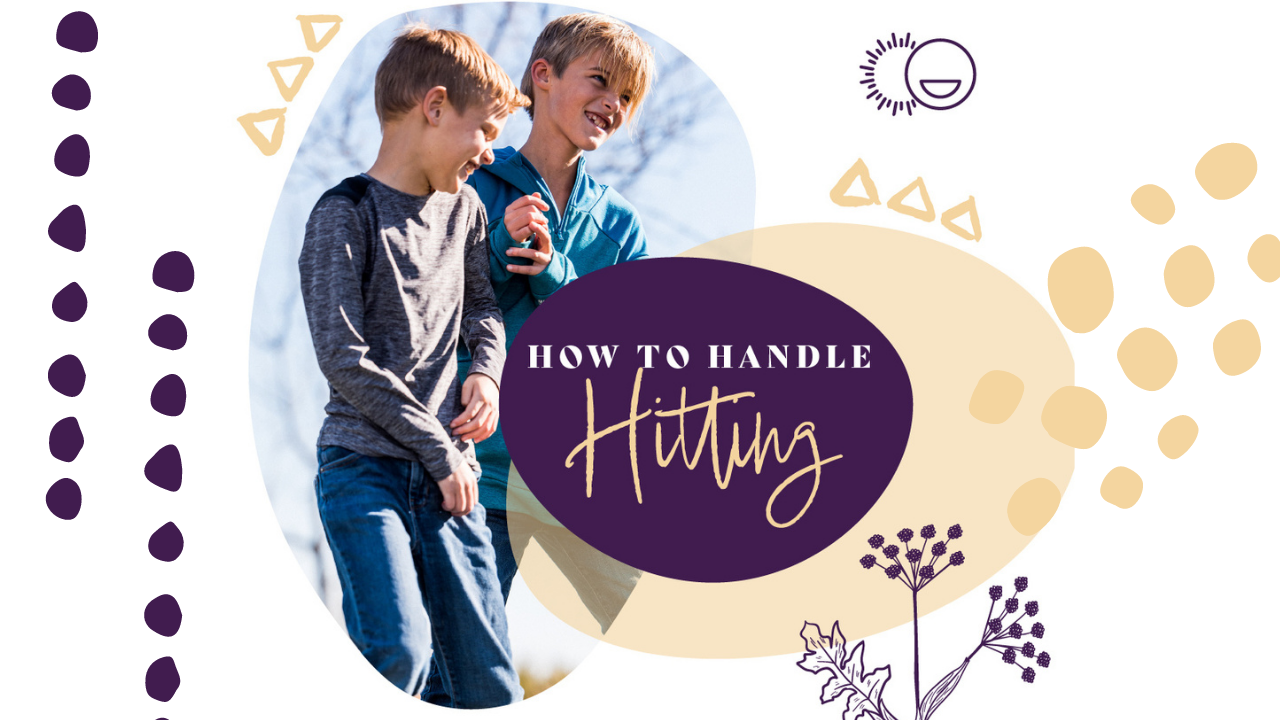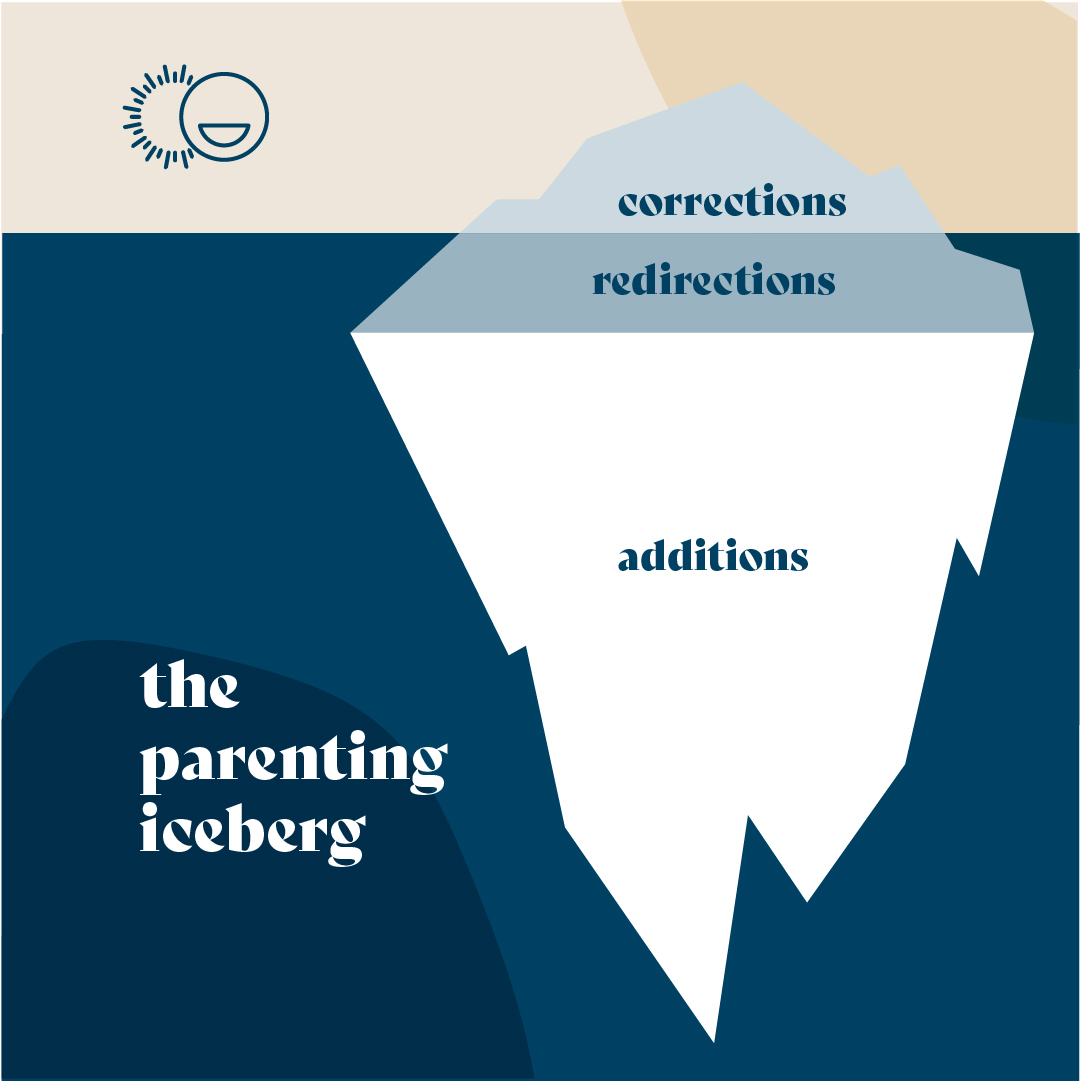How to Handle Hitting
Jul 11, 2022
What do I do when my child hits?
This is a common question we get in our private practices, in our social media channels, AND in the real world with our friends. We believe it’s such a frequently asked question, because:
1. It’s common! Many, if not most, children go through a “hitting phase” AND
2. It’s very concerning to parents when their child hits!
Let’s start with WHY children hit. In the toddler years to early childhood years, children’s brains are fully equipped to have big emotions. However, their frontal lobes are still developing. This means their brains are not yet capable of regulating those big emotions. Thus, your child may go from “0 to 100” emotionally in a blink of an eye. They ask you for another episode of Bluey, you say “no,” and suddenly they flop to the floor, thrashing, kicking, and screaming.
Furthermore, toddler’s language development often lags those intense emotions. Their behavior serves as a way to communicate with you. So, they feel a sudden wave of intense frustration. They do not yet have the ability to say, “Mommy. When you told me I could not have what I wanted, I felt really intense frustration. Maybe we should take a few breaths.” You know what they ARE capable of? Hitting you. With that one, simple gesture, their thoughts and feelings became crystal clear!
And, what happens when they hit you? It makes YOU flash with an intense emotion. Your brain may instantly go to...”How dare you. I birthed you! Oh my gosh, does this mean I’m raising an aggressive child? Are they going to be like this for the rest of their lives!?”
This thought pattern may persuade YOU to overreact, making the hitting moment a bigger moment than it really needs to be.
Thus, step one in handling your child’s hitting is to repeat this mantra to yourself:
“Hitting is communication. It is normal. It is developmental. It won’t be like this forever.”
Reminding yourself of the developmental normalness of hitting will help you to not overreact. However, hear me when I say: I am NOT saying you allow hitting to continue. Validate the normalness, while also teaching skills to reduce hitting.
Remember, that hitting is communication, and it may be the only, or easiest, way they have to communicate their big feelings to you. This means that you must teach them other ways to communicate!
If you’ve been following us on social media, or, read previous blog posts, you’ve probably heard us say: What you do in those hard moments matter. But what REALLY matters is everything you do in the in- between.
This means that your most important work at reducing hitting happens before hitting ever occurs! Let’s quickly take a look at our ARC Parenting Iceberg model.

We structured our parenting model to mimic the importance of those pre-moment moments. We break down our parenting skills into three sections:
-
Additions: These are things you do every day with your child, regardless of your schedule or your child’s behaviors. These are skills that help meet your child’s needs as humans. Things like attention, control, consistency, being “heard,” having someone you can entrust with your thoughts and feelings. Important stuff that all humans need, but that most children do not have the words to request by name. Doing these things daily helps quench your child’s needs before problems really arise. These skills take up about 80% of your parental energy.
-
Redirections: These are skills you use as you start to anticipate your child is about to struggle. In parenting, you know those moments: you are about to cue them that it’s time to leave the park, their sister reaches to steal their favorite toy, their friend is playing and it’s time for their friend to leave. You know by experience, and by “reading the room,” that your child is about to hit. What do you do? You can either ride it out and let chaos ensue, or, use some quick skills to ward off the behavior before it ever begins! These moments take up 10% of your parental time and energy.
-
Corrections: These are the skills you use after your child does have a hard moment. In parenting, these are ways to stop the behavior and help teach your child what to do next time. The goal here is to always teach a replacement skill, which, will help prevent the behavior in the future. These skills also take up 10% of your parental energy.
We collectively call these skills the “ARC Parenting Iceberg.” If you think of each category as three sections of an iceberg, the “additions” and “redirections” are under the water. Other parents don’t really see you using those skills, even though they are the weightiest and most important. The “corrections” are what we tend to get stuck on and stressed about. That’s what other people see you use when your daughter smacks their brother in the middle of the water park. And thus, is what we tend to stay the most focused on, even though, those moments do not matter as much as all the in between moments.
So, let’s apply the question of “What do I do when my child hits?” to the ARC iceberg:
Additions:
Remember that hitting behaviors are often a sign that your child does not have a better way to communicate their intense feelings. Thus, use daily opportunities to teach them OTHER ways to communicate! You can do this by:
-
Labeling feelings. Help build up their emotional vocabulary, so that they have words (not fists) to describe their feelings. Label your own feelings, “Man, this traffic is making me so frustrated!” Label their feelings, “It made you feel SO ANGRY to be told no!” Also label the feelings of book and television characters as you see them. “Ah, Bingo seems really sad that her dad cannot play with her.”
-
Teach them calming down strategies. When we become really stressed, angry, frustrated, or scared, our body goes into “fight or flight” mode. This means that blood (and oxygen) starts directing more heavily towards our extremities, so that we can fight (or flee) a scary situation. This also means that our brain is not getting the oxygen it usually gets and cannot think as deeply. To calm down in those moments, we need to be able to re-regulate our breathing and heart rate. The key is: in order for your child to use calming down strategies in the moment, you must be practicing them every day! Then, they become more automatic, and easier to cue, in the hard moments. We have a printable of 10 easy calming down strategies (that don’t require any physical tools), in our Parenting 101 course. Check it out here.
-
Practicing ‘Gentle Hands’ with toys. Introduce the term “gentle hands” to your child, and practice, practice, practice. You can pretend dolls or action figures are getting into a fight, and one uses “gentle hands” (or, kind words) with another doll. Have your child practice brushing dolls hair, patting them, or rocking them, with gentle hands. Practice using gentle hands with each other. Then, this serves as an automatic physical cue for your child when they are upset.
Redirections:
You see your child getting increasingly more frustrated with their playmate, who keeps taking their Legos. What do you do? Try the following:
- Label the feeling: Remind them that they have words to express their feelings. This may be as simple as saying, “You’re frustrated.”
- Give a clear directive: “Use your words to tell him which Legos are sharable, and which are not.”
- Give them a choice: “Would you rather step out of the room, or take a deep breath?”
- Calmly, but physically, stop hitting: Gently hold their arms, and give a cue, like, “I can’t let you hit. Let’s take a deep breath.”
Corrections:
It happened. You couldn’t catch it in time, and your child hit. What do you do?
- Say neutral in your voice and emotions: Giving extra attention to the hitting behavior may actually increase the behavior over time.
- Give a clear, direct cue, like: “We use our words when upset, hitting is not okay.”
- Encourage a “Redo.” Once your child is calm, have your child “redo” the situation. “Let’s try that again. This time, use your words.”
- Brainstorm how to fix the situation. “Hitting breaks our family rule of ‘using kind words and hands.’ How can we make this better?”
How you apply the above tips will change slightly, based on your child’s age and developmental level. If you have a toddler who hits, you will keep your language more direct, simple, and to-the point. If you have an older child who hits, you may be able to use a little more language, and, may be able to be more hands-off in the problem-solving process. Regardless of age, remember that your reaction should be calm and consistent.
This post is just the tip of the iceberg (see what I did there?) on what we cover in our ‘Parenting 101’ course. If you haven't already, check out the free video from our course, "Love, Like, Enjoy" here: Watch Free Video from Course
-Dr. Erin Avirett
Want more like this? Transform your home with our Parenting 101 Course, and weekly tips from two Child Psychologists.
Stay connected with news and updates!
Join our mailing list to receive the latest news and updates from Mind + Child.
Don't worry, your information will not be shared.
We hate SPAM. We will never sell your information, for any reason.



